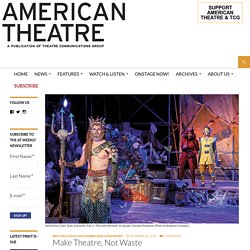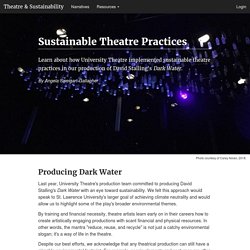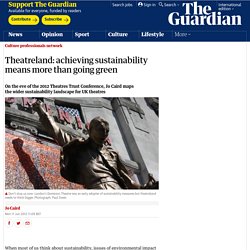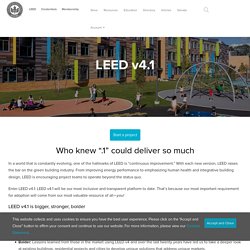

Make Theatre, Not Waste. Derek Dixon, India Tyree, and Kenny Tran in "The Little Mermaid" at Georgia’s Serenbe Playhouse.

(Photo by Breeanne CLowdus) Around the world, hurricanes have grown in intensity and heat records are being hit on an annual basis. These extreme weather events, powered by climate change, has not spared theatres. The Oregon Shakespeare Festival had to cancel numerous shows and lost $2 million worth of revenue because of local wildfires, which get worse every year. The Alley Theatre suffered $18 million worth of damages from Hurricane Harvey. In an effort to do their part, many theatre companies have adopted eco-friendly administrative practices.
Many different factors will influence an individual theatre’s policies, including whether the company owns its space, storage capabilities, budget, and what resources are available in that community. One straightforward way to invest in eco-friendly design is in the selection of materials. Limitations can force experimentation. Sustainable Theatre Practices. According to a 2016 report by the Environmental Protection Agency, leather and textile waste make up at least 10% of the solid waste making its way to landfills.

Costume designer Cully Long and Costume Shop Supervisor Selina French worked together to ensure our costume design for Dark Water contributed less material to this waste stream. Cully's designs for the show drew inspirations from the animals featured in the show in terms of texture, color, and shape. In order to bring them to life while meeting our sustainability goals, Cully and Selina made several commitments at the beginning of our production process: 1. We would prioritize pulling existing pieces from our costume stock. While we usually begin the design process with this step, Cully and Selina redoubled our efforts in this regard, pulling items that were unusual sizes, or finding pieces that were "not quite right" but could be altered or adapted. 2. 3.
Theatreland: achieving sustainability means more than going green. When most of us think about sustainability, issues of environmental impact are probably the first thing to spring to mind.

But although 'eco' may be synonymous with 'sustainable' in much mainstream debate, achieving sustainability in the theatre industry is about more than simply greening our spaces and practices. If our theatres are going to continue to meet the needs of artists and audiences today and in the future, all three pillars of sustainable development – environmental, social and economic – must be on the agenda, informing decision and policy making at every level. As the recession continues to bite and cuts to public spending begin to take affect, the industry's discussion around sustainability must become wider ranging than ever before. This is the topic being addressed by speakers and delegates at this week's Theatres Trust conference: 'Delivering sustainable theatres – the challenge of achieving the triple bottom line'. The State Theatre, State College, PA. The State Theatre is committed to sustainability practices through the integration of our #SustainTheState Program.
#SustainTheState’s mission is to enable artists and audiences to experience, appreciate and embrace the performing arts in a manner that ensures that future generations have the same opportunity. Sustainability at The State Theatre is comprised of a diverse array of project initiatives. Our current projects include Dispose Responsibly, Hydrate the State, Farm-to-Theatre, and several other sustainability initiatives.
Please consider donating to our sustainability fund! Dispose Responsibly Dispose Responsibly is our ongoing, comprehensive recycling and composting program in partnership with the Centre County Recycling and Refuse Authority. Fun fact: From January 2016 to current date, our waste stream efforts have diverted 18,472 lbs of compostable trash from landfill! Hydrate the State. LEED v4.1. LEED recertification is an important step in protecting your building asset.

Recertification helps you maintain and improve your building, while keeping your sustainability investment in place. Recertification is available to all occupied and in-use projects that have previously achieved certification under LEED — including BD+C and ID+C, regardless of their initial rating system or version. This new guidance presents a simple and data-driven pathway, reassuring projects that they are meeting ever-changing goals and staying on the cutting edge.
Step 1: Review the Recertification Guide, which details the requirements and process.Step 2: Contact us to activate your project’s recertification. Once you’ve successfully competed recertification, your project will earn LEED for Operations and Maintenance (LEED O+M) certification under the newest available version of the rating system. Learn More.